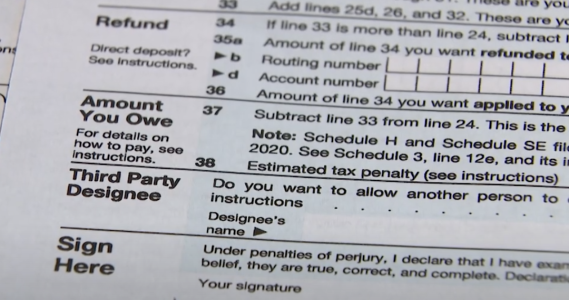Social Security’s insolvency now expected a year sooner—What that means for you
- Replies 0
If you’re like most Americans over 60, Social Security isn’t just a line on your pay stub—it’s a lifeline. It’s the promise that after decades of hard work, you’ll have a safety net to help you enjoy your golden years.
But a new report has sent shockwaves through the retirement community: Social Security’s trust funds are now projected to run dry in 2034—a full year earlier than previously thought.
What does this mean for you, your family, and the millions who depend on these benefits? Let’s break it down, GrayVine style: clear, candid, and with a dash of hope.
Why the Sudden Change?
Social Security’s trust funds are now projected to run out by 2034, a year earlier than previously estimated, forcing the program to reduce monthly payments by roughly 20%, according to the Social Security Board of Trustees’ annual report released Wednesday.
The updated forecast is partly driven by increased expenditures tied to the Social Security Fairness Act, which enhanced benefits for millions of recipients. The prior year’s projection indicated that benefit reductions would begin in 2035, affecting Social Security’s 70 million participants.
Although the program has long faced financial pressures, the timeline for depletion shifts with economic trends and demographic changes.
A major factor behind the expected shortfall is the ongoing retirement of those born between 1946 and 1964 and a growing elderly population, which is causing benefit payouts to exceed incoming funds.

"Congress, along with the Social Security Administration and others committed to eliminating waste, fraud and abuse, must work together to protect and strengthen the trust funds for the millions of Americans who rely on it—now and in the future—for a secure retirement or in the event of a disability," stated Frank Bisignano, commissioner of Social Security.
What It Means for Beneficiaries
Even if the trust funds are exhausted, a scenario that could be averted through congressional action to adjust funding, benefits won’t vanish entirely.
Instead, the annual report notes that Social Security recipients would face a 19% reduction in their benefits.
Given that the average monthly retirement benefit currently stands at $1,976, such a cut would lower that amount to around $1,600.
Some senior advocacy organizations see the report as a critical signal for legislative action. "Congress must act to protect and strengthen the Social Security that Americans have earned and paid into throughout their working lives," said AARP CEO Myechia Minter-Jordan in an email. "More than 69 million Americans rely on Social Security today and as America's population ages, the stability of this vital program only becomes more important."
Also read: Social Security garnishments are rising—Here’s how to protect your benefits
One potential way to boost revenue is by eliminating the income cap on taxable earnings, currently set at $176,100. Wages above that limit are not subject to the Social Security payroll tax.
"In poll after poll, the American people are clear that they strongly support making the wealthy pay their fair share into Social Security, and overwhelmingly oppose benefit cuts," Altman added.
Meanwhile, some Republican lawmakers have floated raising the full retirement age to 70 as a cost-saving measure, a move that Max Richtman, CEO of the National Committee to Preserve Social Security and Medicare, argues would function as a benefit cut.

"Current and future seniors (nearly 50% of whom rely on their benefits for all or most of their income)—should not be asked to bear the cost of improving the program's finances," Richtman said.
The law repealed two federal rules that had previously limited full benefit access for individuals with public pensions, as well as reduced survivor and spousal benefits.
With the law in place, approximately 3.2 million beneficiaries are now receiving increased payments, ranging from small boosts to over $1,000 more each month.
Also read: What did President Trump leave out? The surprising Social Security plan missing from his Big, Beautiful Bill
The program has also seen a notable spike in applications. Between January and May 2025, filings for benefits rose by 17% year-over-year, reaching 1.8 million. At this pace, Social Security could see 4 million new enrollees by the end of the year.
Experts told CBS MoneyWatch that growing concerns over the program’s financial stability may be driving this surge. At the same time, operational challenges have been compounded by workforce cuts and administrative changes under the Trump administration.
"Medicare provides essential coverage for millions of American seniors, but this year's report underscores the urgent need for serious, sustained reform to secure its long-term future," said CMS Administrator Dr. Mehmet Oz.
Read next: Are you one of the millions about to be hit by Social Security’s biggest change in 90 years? Here’s what you need to know

Have you started thinking about how these changes might affect your retirement? Are you worried, or do you have a plan in place? What would you like to see Congress do to protect Social Security and Medicare for future generations? Share your thoughts, questions, and stories in the comments below!
But a new report has sent shockwaves through the retirement community: Social Security’s trust funds are now projected to run dry in 2034—a full year earlier than previously thought.
What does this mean for you, your family, and the millions who depend on these benefits? Let’s break it down, GrayVine style: clear, candid, and with a dash of hope.
Why the Sudden Change?
Social Security’s trust funds are now projected to run out by 2034, a year earlier than previously estimated, forcing the program to reduce monthly payments by roughly 20%, according to the Social Security Board of Trustees’ annual report released Wednesday.
The updated forecast is partly driven by increased expenditures tied to the Social Security Fairness Act, which enhanced benefits for millions of recipients. The prior year’s projection indicated that benefit reductions would begin in 2035, affecting Social Security’s 70 million participants.
Although the program has long faced financial pressures, the timeline for depletion shifts with economic trends and demographic changes.
A major factor behind the expected shortfall is the ongoing retirement of those born between 1946 and 1964 and a growing elderly population, which is causing benefit payouts to exceed incoming funds.

Social Security’s trust funds are now projected to run out in 2034, a year earlier than previously forecast, which could lead to a 19% cut to retirees’ monthly payments if no action is taken. Image source: Hearst Television / Youtube.
"Congress, along with the Social Security Administration and others committed to eliminating waste, fraud and abuse, must work together to protect and strengthen the trust funds for the millions of Americans who rely on it—now and in the future—for a secure retirement or in the event of a disability," stated Frank Bisignano, commissioner of Social Security.
What It Means for Beneficiaries
Even if the trust funds are exhausted, a scenario that could be averted through congressional action to adjust funding, benefits won’t vanish entirely.
Instead, the annual report notes that Social Security recipients would face a 19% reduction in their benefits.
Given that the average monthly retirement benefit currently stands at $1,976, such a cut would lower that amount to around $1,600.
Some senior advocacy organizations see the report as a critical signal for legislative action. "Congress must act to protect and strengthen the Social Security that Americans have earned and paid into throughout their working lives," said AARP CEO Myechia Minter-Jordan in an email. "More than 69 million Americans rely on Social Security today and as America's population ages, the stability of this vital program only becomes more important."
Also read: Social Security garnishments are rising—Here’s how to protect your benefits
Solutions to Stabilize Social Security
There are two primary strategies to reinforce Social Security: increasing revenue or reducing benefits, according to Nancy Altman, president of Social Security Works. "Any politician who doesn't support increasing Social Security's revenue is, by default, supporting benefit cuts," she wrote.One potential way to boost revenue is by eliminating the income cap on taxable earnings, currently set at $176,100. Wages above that limit are not subject to the Social Security payroll tax.
"In poll after poll, the American people are clear that they strongly support making the wealthy pay their fair share into Social Security, and overwhelmingly oppose benefit cuts," Altman added.
Meanwhile, some Republican lawmakers have floated raising the full retirement age to 70 as a cost-saving measure, a move that Max Richtman, CEO of the National Committee to Preserve Social Security and Medicare, argues would function as a benefit cut.

The accelerated depletion is partly due to increased benefit costs and a surge in seniors retiring, causing program spending to outpace income. Image source: Hearst Television / Youtube.
"Current and future seniors (nearly 50% of whom rely on their benefits for all or most of their income)—should not be asked to bear the cost of improving the program's finances," Richtman said.
Significant Changes This Year
One key change affecting Social Security in 2025 is the implementation of the Social Security Fairness Act, which took effect January 5.The law repealed two federal rules that had previously limited full benefit access for individuals with public pensions, as well as reduced survivor and spousal benefits.
With the law in place, approximately 3.2 million beneficiaries are now receiving increased payments, ranging from small boosts to over $1,000 more each month.
Also read: What did President Trump leave out? The surprising Social Security plan missing from his Big, Beautiful Bill
The program has also seen a notable spike in applications. Between January and May 2025, filings for benefits rose by 17% year-over-year, reaching 1.8 million. At this pace, Social Security could see 4 million new enrollees by the end of the year.
Experts told CBS MoneyWatch that growing concerns over the program’s financial stability may be driving this surge. At the same time, operational challenges have been compounded by workforce cuts and administrative changes under the Trump administration.
Medicare’s Financial Picture
In a separate report, the Medicare Board of Trustees warned that the federal health insurance program for seniors will encounter its own funding crisis in 2033. At that point, the program is expected to only cover 89% of its expenses."Medicare provides essential coverage for millions of American seniors, but this year's report underscores the urgent need for serious, sustained reform to secure its long-term future," said CMS Administrator Dr. Mehmet Oz.
Read next: Are you one of the millions about to be hit by Social Security’s biggest change in 90 years? Here’s what you need to know
Key Takeaways
- Social Security’s trust funds are now projected to run out in 2034, a year earlier than previously forecast, which could lead to a 19% cut to retirees’ monthly payments if no action is taken.
- The accelerated depletion is partly due to increased benefit costs and a surge in seniors retiring, causing program spending to outpace income.
- Debate continues over how best to shore up Social Security’s finances, with some advocating for raising payroll tax revenue (including lifting income caps), while others have suggested raising the retirement age, which would effectively cut benefits.
- A recent legislative change, the Social Security Fairness Act, has increased benefits for millions, but a record number of Americans are lodging claims early amid concerns about the program’s future stability.
Have you started thinking about how these changes might affect your retirement? Are you worried, or do you have a plan in place? What would you like to see Congress do to protect Social Security and Medicare for future generations? Share your thoughts, questions, and stories in the comments below!






